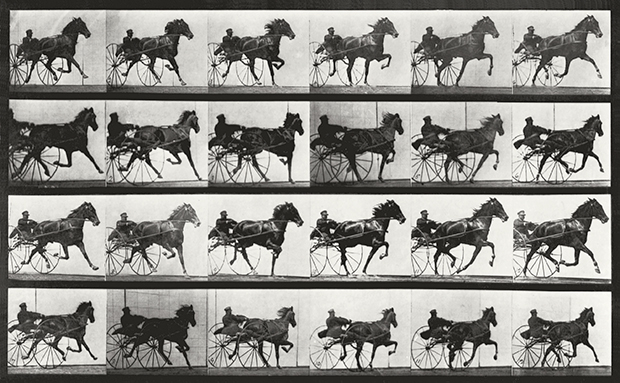
Photos that changed the world: #1 Horses Trotting
Eadweard J. Muybridge's 1879 print was the first to capture animals moving, changing both photography and art
Photography might have threatened painting’s position as a realist’s form, but photography also extended human vision, bringing new possibilities to the arts, as our newly updated title, The Photography Book, makes clear. Eadweard Muybridge was a British-born entrepreneur, who first found fame in San Francisco during the 1860s, where his landscape photographs of Yosemite Valley proved popular with the city’s middle classes.
On the strength of these images, the local industrialist, horse breeder, politician and founder of Stanford University, Leland Stanford, asked the photographer to settle a bet: Did a trotting horse take all four of its feet of the ground in a stride?
Working at Stanford’s stud farm in Palo Alto, Muybridge devised a way to capture the animals in motion. Here’s how author Ian Jeffrey puts it in our newly updated edition of The Photography Book.
“As the horse moved forward, it broke taut threads which activated the shutters of twelve cameras placed 53 cm (21in) apart. The horse was travelling at 12.195 m (40ft) per second in front of a segmented, numbered screen, and the exposures were taken in less than half a second.”
Having captured the animal in motion, and went onto investigate the possibilities of this new type of photography. “Muybridge worked at Palo Alto between 1878 and 1880," Jeffrey writes, "photographing animals and then human beings in motion. The next step was to use such pictures to make a moving image, and Muybridge experimented along those lines in the 1880s with a device he called a zoopraxiscope, but he left the development of that ida to Thomas Edison, the inventor of the phonograph. In 1884 Muybridge began to work under the aegis of the University of Pennsylvania.”
The University’s publication of his ‘seriates’, as this quick succession of sequential images were known in the 1880s, not only spurred on the development of the moving picture, but also inspired a generation of artists, enthralled by the possibilities of photography. Marcel Duchamp’s seminal modernist painting, Nude Descending a Staircase, No. 2, drew directly from Muybridge’s Woman Walking Downstairs from 1887, while Francis Bacon was inspired by Muybridge nude motion studies. In settling a horse breeder’s bet, Muybridge had pushed photography beyond the limits of human perception, altering both the medium, and visual arts more generally.
We hope you’ve enjoyed this edited extract from our new book. Look out for more in the coming days, and if you like what you've read, you can buy a copy of The Photography Book here.